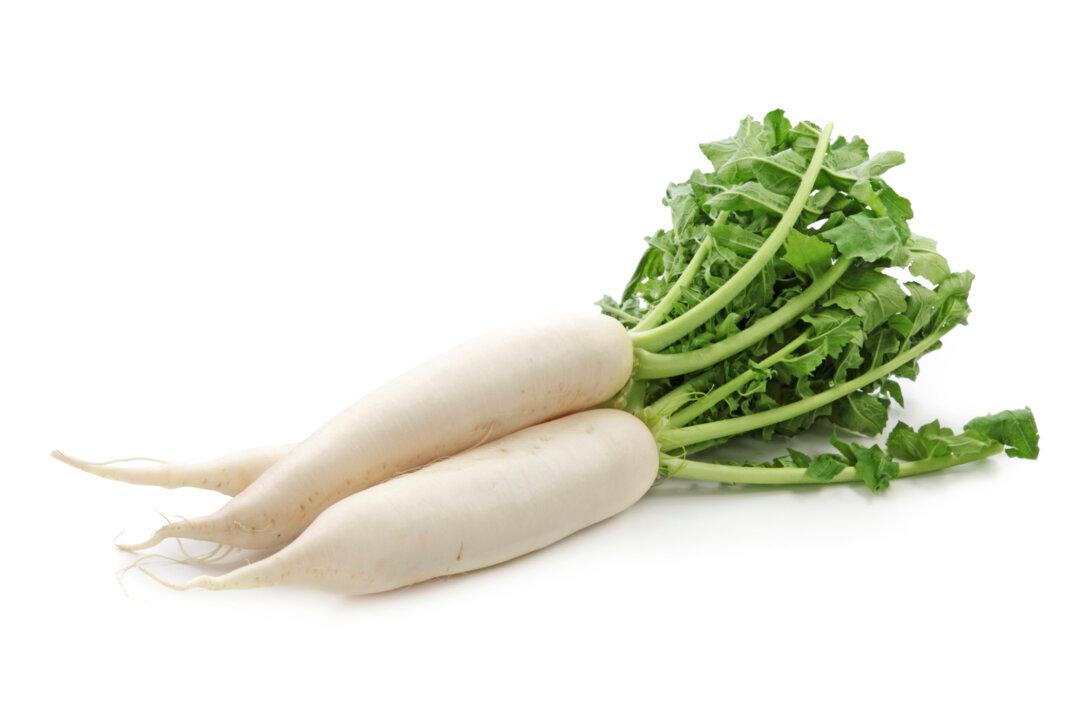I was 20 years old when I first started learning how to cook. Until then, my idea of a brilliantly prepared tomato sauce was made from a can of puréed tomatoes with some dried oregano, garlic powder, and a touch of red chili pepper flakes for a kick.
Thankfully I was introduced to the world of healthy living and had the good fortune to attend a holistic nutrition school where I enrolled in my first cooking class taught by a woman named Petra.
Petra was a beautiful, slender, sweet woman who inspired everyone who set foot in her kitchen. She would lovingly hold up collard greens for us all to admire, Aren’t they beautiful, she would say.
And they were! She would then point out the fine details of the beautiful leaves. Holding up the bright-green, crisp, fresh-looking leaves, she would show us that they were not wilted or yellowing, which happens as greens age.
“Do you see how each leaf has veins running through it?” Petra would ask as she traced her finger down the center of the leaf. We would all nod in awe at this basic detail we never bothered to appreciate before now. “These veins bring water and minerals to this leaf from the plant’s roots. They reach upward toward the sky, indicating their yin nature.”
When preparing the greens, Petra instructed us to cut along the veins to keep them looking good, and to stay in alignment with their growing patterns. Looking at food preparation this way helped me appreciate the art of cooking and the desire to be more in sync with the earth’s energetic patterns of yin and yang.
I also acquired cutting skills that I would never forget because they made so much sense to me. These lessons taught me how to develop rapport with the ingredients, opening for me a whole new dimension of food awareness.
At nutrition school, I got excited about the macrobiotic way of life and subjected my then roommate to bowls of my carrot soup flavored with a little too much ginger, my too-diluted miso soup, and my “crispy” brown rice, (I had a tendency to burn my rice at the beginning of this journey).
Despite my culinary disasters, I pushed on because the macrobiotic diet teaches one to strive for the balance between yin and yang and to be in sync with the elements of the earth. That philosophy sounded so right to me that I dreamed of cooking and eating my way to perfect balance.
Although I no longer follow a macrobiotic diet, which didn’t end up helping me find the kind of balance I was searching for, I stuck to cooking (thank goodness!). I still have my macrobiotic cookbooks and recipes and love to incorporate many of those dishes into my menus.
Later, on my journey to attaining good health and a thin body without the feeling of deprivation, I discovered British writer Sophie Dahl (granddaughter of Roald Dahl). She became famous as a voluptuous model, and later lost a lot of weight when she discovered how to get healthy and eat well.
Dahl has written cookbooks filled with delicious recipes and stories of her journey to healthier living and eating. Her dishes are tasty, and her cookbooks always have a splash of indulgent decadence (There are incredible dessert sections in her books, and they are simply there for the fun of it).
It’s been an interesting journey, traveling from a diet of processed foods to a strict macrobiotic diet. Being that determined and strict was a fabulous experience because I got to learn what it means to commit to living a healthy life. I discovered that living in balance also means living without fear and being healthy enough to enjoy “naughty” food from time to time.
Today, I eat everything but aim to be addicted to nothing. I love rich desserts but can also go months without them and not think twice about it. If I find myself craving sugar, bread, or meat too much, I cut back and return to balance.
A Fat-Burning Vegetable
This autumn, keep your body healthy and boost your metabolism by incorporating radishes into your diet.
“A summer table filled with delicious choices and Mediterranean influences, now that’s a table I can get with … radishes from the farmer’s market cut wafer thin and dusted with truffle salt and mint,” Dahl writes in her cookbook From Season to Season: A Year in Recipes.
The radishes Dahl mentions are also the perfect food for autumn and a brilliant choice for reducing and digesting excess fat and mucous in the body.
Radishes are pungent and sweet (try eating a steamed radish to experience the sweetness they release). Radishes are detoxifiers. They remove stagnated food, cut mucous, and help keep the lungs moist, according to Paul Pitchford in his book Healing With Whole Foods.
You can prepare radishes as Dahl suggests—sliced thin and sprinkled with truffle salt and mint—or as a condiment to flavor a more Asian-style dish. A great condiment recipe is simple to make: Mix a grated a stalk of fresh daikon radish with grated carrots and a little soy sauce.
You can eat this condiment daily to fight viral infections such as the common cold and influenza. That said, since all foods change the balance of our body systems, avoid eating radishes on a regular basis if you are generally cold and thin.
Tysan Lerner is a certified health coach and personal trainer. She helps women attain their body and beauty goals without starving themselves or spending hours at the gym. Her website is www.lavendermamas.com.





